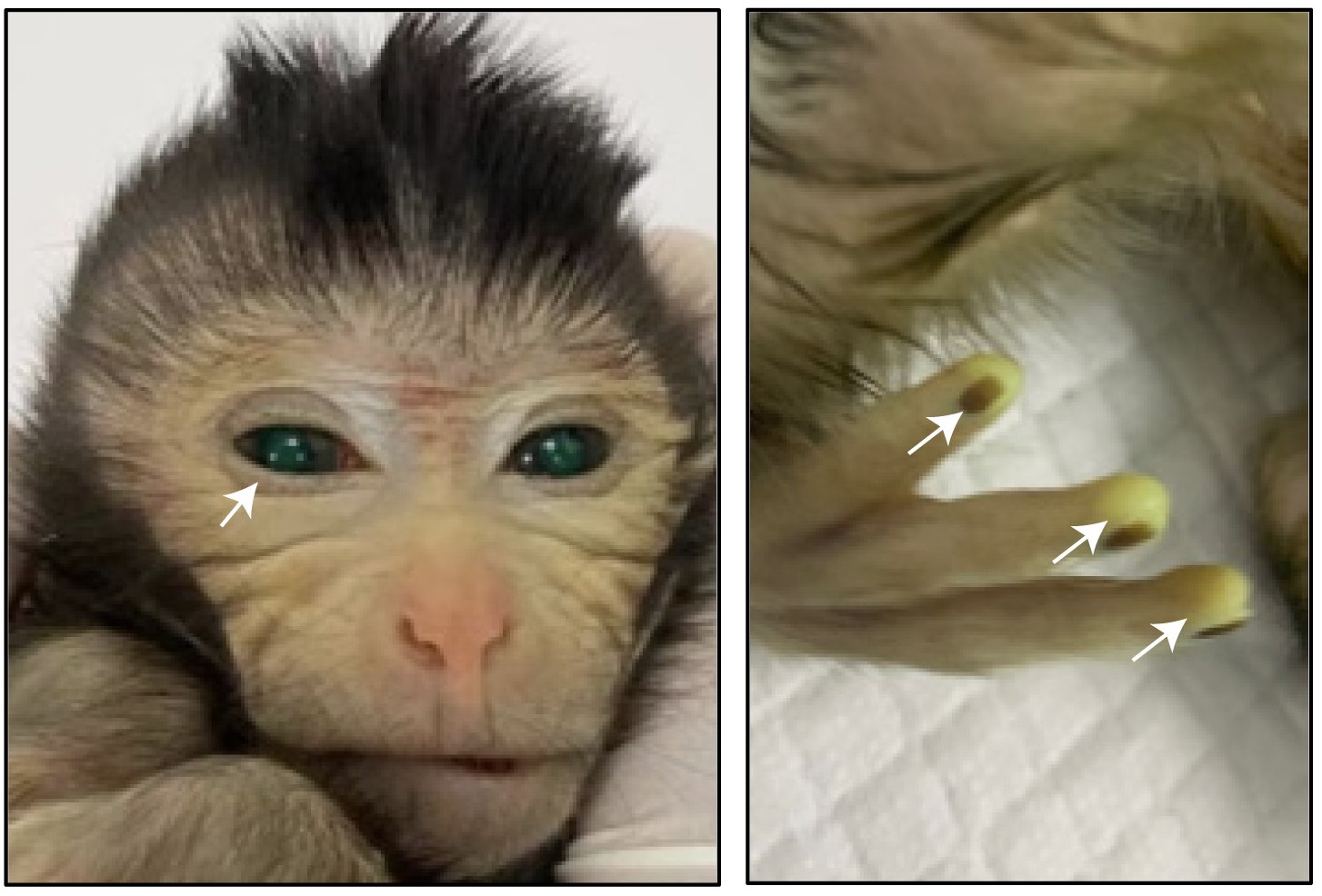For the first time ever, a chimeric monkey containing a large number of cells derived from embryonic stem cells has been born alive. The infant’s cells originate from two different embryos, meaning they are genetically distinct, therefore rendering the young primate a “chimera”.
“This has been a long-sought goal in the field,” senior author Zhen Liu told IFLScience.
A chimera is an animal whose body is composed of cells that are genetically different from one another, containing two distinct sets of DNA. Chimerism within a species can occur naturally, including in humans, although this is very rare. In the lab, chimeras have previously been achieved in rodents, but have proven more difficult to pull off in non-human primates.
“The golden standard of naïve pluripotency is the generation of live chimeric animals with high contribution from homologous pluripotent stem cells, an approach that has been well established in mice and rats,” Liu explained.
This breakthrough in monkeys, a group of animals more closely related to our own species, helps us to better understand pluripotency – the ability of a cell to differentiate into all of the cell types needed to create a live animal – in primates, “and points that human pluripotent stem cells cultured in the same conditions have full developmental potential,” said Liu.
To create their historic chimera, Liu and co-authors used cynomolgus monkeys, otherwise known as crab-eating or long-tailed macaques, a stalwart species in biomedical research. First, they created nine stem cell lines from 7-day-old cynomolgus embryos, before testing them to ensure they had retained pluripotency.
The stem cells were also labeled with green fluorescent protein, which glows under UV light and as such is often used in this type of work as a marker of gene expression. In this instance, it allowed the researchers to identify tissues in the monkey that had grown out of the tagged stem cells.
Some of the stem cells were then injected into 4 or 5-day-old cynomolgus embryos and implanted into female monkeys.
Of the 12 pregnancies and six live births that resulted, just one monkey that was born alive and one that was miscarried could be considered chimeras, with cells that originated from the fluorescent green-labeled stem cells throughout their bodies.

The 3-day-old chimeric monkey sporting some fluorescent fingers.
Image credit: Cell/Cao et al.
Tissues that had incorporated these donor cells included the brain, heart, kidney, liver, gastrointestinal tract, gonads, and placenta. In the case of the live chimeric monkey, the stem cells contributed to between 21 and 92 percent of the various tissue types, which works out as an average of 67 percent across the 26 tissues tested.
“In this study, we have provided strong evidence that naïve monkey pluripotent stem cells possess the capability of differentiating in vivo into all the various tissues composing a monkey body,” co-corresponding author Miguel Esteban said in a statement.
“This research not only has implications for understanding naive pluripotency in other primates, including humans, but it also has relevant practical implications for genetic engineering and species conservation,” added Liu.
For example, he explained to IFLScience, monkey pluripotent stem cells can be cultured in the lab and gene-edited, which could allow researchers to produce genetically engineered monkeys with germline transmission – the passing on of genetic material to future generations.
For now, the team are looking to improve the efficiency of their method for generating chimeric monkeys, and wish to explore the mechanisms underlying the survival of the injected monkey stem cells in their host to help them do this.
The study is published in Cell.
Source Link: World First: Live Birth Of “Chimeric” Monkey With High Contribution From Stem Cells